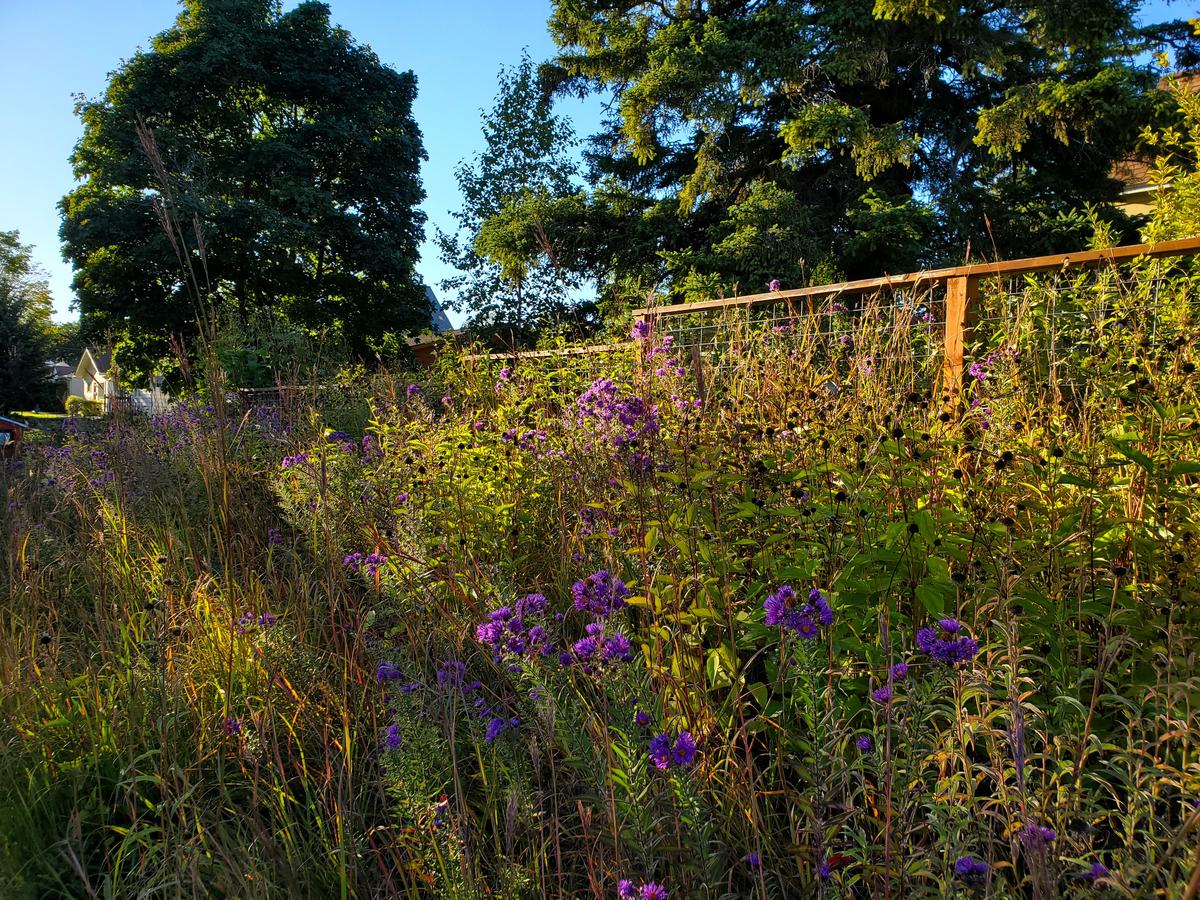A few weeks ago I found a spider in the shower. It was about the size of my hand. MY HAND! After some well-poised screeches and full-body heebie-jeebies, I quickly summoned the official bug-picker-upper of the household (AKA, not me). The giant monster was cooed into a jar and safely deposited into the jungle that is our suburban yard.
As I recovered from the excitement, I reminded myself that we maintain this jungle-like yardscape for all of our nature friends – from cute little nuthatches to blood-sucking monsters (also known as spiders). And that jungle-like yard keeps working through my favorite season – fall!
Migrating birds, pumpkin picking, excessive Halloween decorations, PSLs (pumpkin spice lattes, for my non-millennial audience) and flannel...be still my heart. Fall also means minimal yard maintenance!
You read that correctly, my friends. Put down the rake and garden shears and learn how you can promote wildlife habitat and protect our streams and lakes through the autumn months.
Promote Wildlife Habitat
More foliage means the less I see of my neighbors and the more critters scurrying about the yard – a double win! Except for a few areas near sidewalks and roadways (we love public safety), we do not trim, mulch, chop or lop any of our vegetation in the fall. Birds collect seeds from dead flower heads, critters store snacks in dense vegetation, and insects bed down under leaves and in garden beds doing whatever it is insects do over the winter (I truly don’t want to know).
Did you know that flat, boring, fertilized lawns are imported status symbols of the 18th century British Empire? (And Kentucky Bluegrass isn't even from Kentucky!) The invention of the lawnmower made lawns accessible to the masses, but that doesn't mean it's a good thing. The National Wildlife Federation has some great information on the impact of wildlife gardens and the University of Minnesota Extension can help you with sustainable landscape design and native plants.
Save the Bees
Many of us imagine bees in a hive nestled into a tree, making honey and spending time focused on their next victim to sting. But most native bees in Minnesota nest underground or in the stem of plants (and they don’t make honey...and they truly don’t wish to sting you). During fall and winter, they slumber in plants and under dirt that is critical for maintaining a healthy bee population the following spring.
Really, really, really can’t stand dead plant stalks billowing in the crisp autumn wind? Leave behind 8 - 12 inches of plant stubble. This leaves stem-nesting insects a safe home for the winter.
Fall is also a great time to plan ahead for next year. Learn how you can plant and maintain a bee lawn.
Leaves & Storm Drains
Can’t possibly imagine a fall without recreating the scene from It’s the Great Pumpkin, Charlie Brown? (You know the one. Lucy pulls the football away as Charlie Brown is about ready to kick it, and he goes flying into a pile of leaves.) If you insist on raking up leaves then make sure to properly dispose of them. Check with your local sanitary district to see if they offer opportunities to drop-off your yard waste. But can I provide one last plea for at least maintaining a brush and leaf shelter pile somewhere in your yard?
Take care to keep leaves (and grass clippings) off sidewalks and roads, and away from storm drains and out of ditches. Water flowing off urban properties and through storm drains is not treated. Anything lying about is picked up and carried to nearby streams and lakes. Excess leaves in our waterbodies makes for sad fish. See what Duluth’s No Poop Fairy has to say about leaf litter and keeping his fish friend, Leonard, happy and healthy.
We’ll revisit the topic of yard maintenance again in the spring.
Until next month,
Tiff
